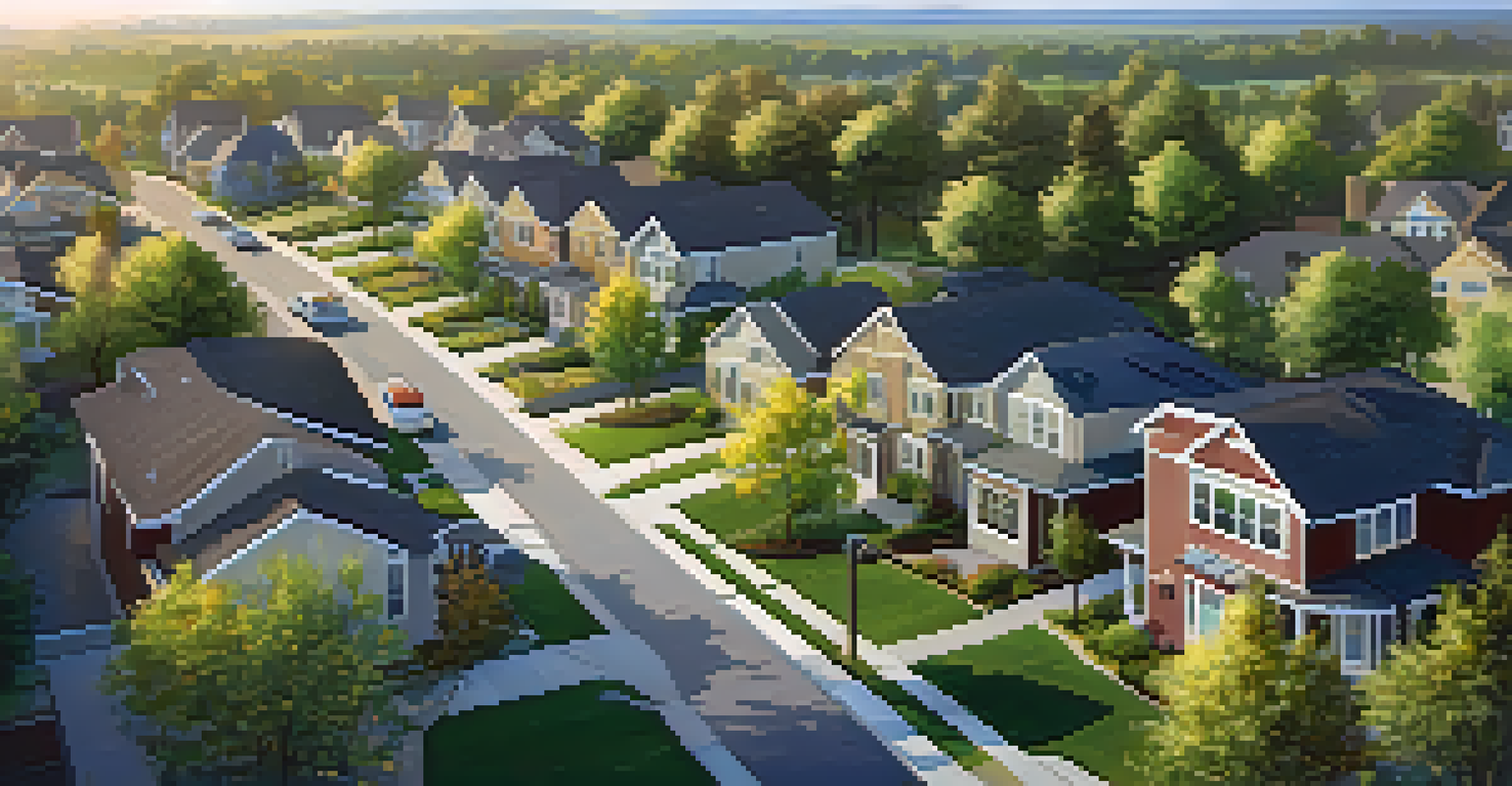Urbanization Trends and Their Impact on Property Values

Understanding Urbanization and Its Key Drivers
Urbanization is the process where an increasing percentage of a population moves from rural to urban areas. This phenomenon is driven by various factors, including economic opportunities, better living standards, and access to services. As cities expand, they become magnets for those seeking jobs and improved quality of life.
Urbanization is not just about the physical growth of cities; it's a complex interplay of economic, social, and environmental factors that shape our lives.
The growth of urban areas can be attributed to industrialization, technological advancements, and globalization. For example, many young professionals flock to cities for job prospects in tech hubs, leading to a surge in urban populations. This influx reshapes the demographics and economic landscape of the cities.
Understanding the drivers of urbanization helps us anticipate its effects on housing markets and property values. As more people settle in urban areas, demand for housing increases, which can lead to rising property prices and shifts in real estate trends.
The Direct Impact of Urbanization on Housing Demand
As urban populations grow, the demand for housing intensifies. This can manifest in various ways, such as increased construction of residential units and a rise in property values across neighborhoods. Cities that are experiencing significant population growth often see a corresponding spike in real estate prices.

For instance, neighborhoods that were once considered undesirable may become hot spots for young families and professionals. This shift can lead to gentrification, where property values increase, and long-term residents may be displaced due to rising costs.
Urbanization Boosts Housing Demand
As more people move to urban areas, demand for housing rises, leading to increased property values and potential gentrification.
Consequently, understanding these dynamics is crucial for investors and homeowners alike. Being aware of where urbanization is occurring can help guide strategic decisions regarding property purchases and investments.
How Infrastructure Development Influences Property Values
Infrastructure development plays a pivotal role in shaping property values in urban areas. Enhanced public transportation, new roads, and improved utilities make neighborhoods more accessible and desirable. For example, a new subway line can significantly increase property values along its route.
The city is not a concrete jungle, it is a human zoo.
When cities invest in infrastructure, they not only improve the quality of life for residents but also attract businesses. This influx of businesses can lead to job creation, further enhancing demand for housing in the area.
As a result, the interplay between infrastructure and property values is essential for understanding urbanization effects. Investors should pay attention to infrastructure projects when evaluating potential real estate investments.
The Role of Economic Factors in Urban Property Markets
Economic factors, such as employment rates and income levels, significantly influence property values in urban areas. When the economy is thriving, people have more disposable income to invest in real estate. Conversely, during economic downturns, property values may stagnate or decline.
For example, cities with diverse economies tend to have more stable property markets. If one industry faces challenges, others may sustain the local economy, keeping housing demand steady. This stability is particularly attractive to investors looking for long-term gains.
Infrastructure Drives Property Value
Investments in infrastructure, such as public transport improvements, enhance property values by making neighborhoods more accessible.
Understanding the economic climate is vital for anyone involved in real estate. Keeping an eye on job growth, wage trends, and overall economic health can provide valuable insights into property value trends.
Urbanization and Its Environmental Impacts on Property Values
The environmental impact of urbanization can significantly affect property values. As cities expand, they often face challenges such as pollution, loss of green spaces, and increased traffic congestion. These factors can decrease the attractiveness of certain areas, leading to fluctuations in property values.
For instance, neighborhoods with abundant parks and clean air tend to maintain higher property values, as people are drawn to healthier living environments. Conversely, areas plagued by pollution may see property values decline as residents seek cleaner surroundings.
Therefore, considering environmental factors is crucial for both buyers and investors. Areas that prioritize sustainability and green initiatives often experience more robust property value growth.
Social Dynamics and Their Influence on Urban Property Trends
Social dynamics, including demographic shifts and cultural trends, can greatly influence urban property markets. As more people move into cities, changes in lifestyle preferences can drive demand for different types of housing. For instance, there may be a growing interest in co-living spaces or mixed-use developments.
Cities that embrace diversity and inclusivity often attract residents looking for vibrant communities. This can lead to increased demand for properties in neighborhoods known for cultural richness, affecting property values positively.
Economic Factors Impact Real Estate
Employment rates and income levels significantly influence property values, with diverse economies providing more stability in housing markets.
Investors should be aware of these social trends, as they can impact property desirability. Understanding the evolving needs and preferences of urban residents can guide smart investment choices.
Future Trends: What to Expect from Urbanization
As urbanization continues to evolve, several trends are likely to shape property values in the coming years. One significant trend is the rise of remote work, which may lead to more people seeking homes outside city centers. This shift could result in changing property values as demand fluctuates between urban and suburban areas.
Additionally, the emphasis on sustainability is expected to grow, with eco-friendly developments becoming more desirable. Properties that are energy-efficient or located in green neighborhoods may command higher prices as environmental consciousness rises.

Staying informed about these future trends is essential for anyone involved in the property market. Anticipating changes can provide strategic advantages in buying, selling, or investing in real estate.